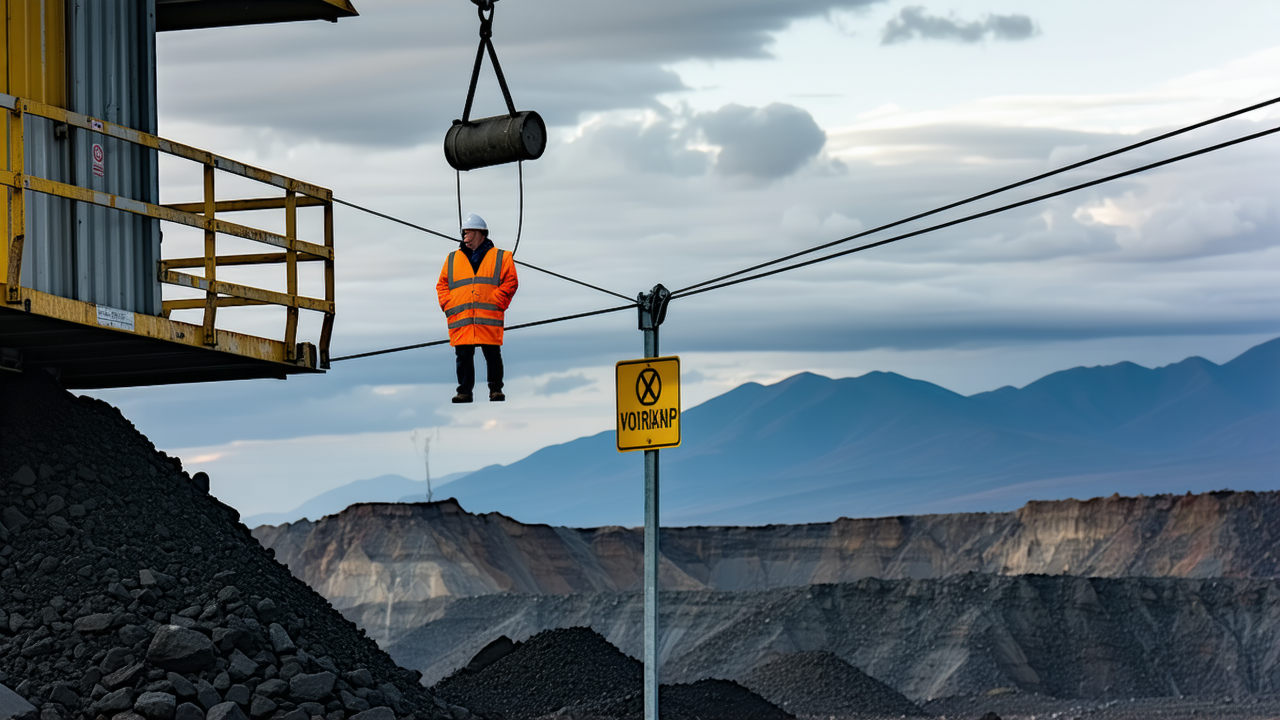Climate Protestor Claims Stockton Mine Employee Fired Gun to Scare Him
Climate Protestor Claims Stockton Mine Employee Fired Gun to Scare Him
By Nick James
A climate activist who was protesting at the Stockton Mine on New Zealand’s West Coast has alleged that a mine employee fired a shotgun to scare him during his nine-day occupation of a coal bucket suspended high above the ground. The claim has sparked a heated debate between the protesters, the mining company, and local communities, all of whom are deeply divided over the future of the mine.
Two activists from the group Climate Liberation Aotearoa have been occupying a coal bucket on the aerial ropeway near the Stockton Mine since early July. Their protest is aimed at opposing the proposed expansion of the Bathurst Resources mine under the government’s fast-track approvals legislation. The activists believe the expansion will cause significant environmental damage, and they are calling for the company to abandon its plans.
According to Tamati Taptiklis, one of the protesters, at around 2:30 PM on Tuesday, he heard three shotgun shots fired into the air nearby. He claims he saw a person in a Bathurst Resources uniform, approximately 250 meters away, walking away and lowering a long, thin object. Taptiklis believes the person was from the company and was attempting to fire warning shots to intimidate the activists and encourage them to leave the mine.
However, Bathurst Resources has strongly denied the claim. The company’s CEO, Richard Tacon, told RNZ that no firearms were fired at any time and that the company has strict rules against such behavior. He added that he did not believe the company employed anyone “stupid enough” to commit such an act.
Taptiklis also revealed that his group had received an online threat from a mine employee, which read: “Angry, upset locals have been busy collecting information on you, your organisation and on those within our community that may have assisted you in your recent industrial sabotage.” The message warned that the activists should avoid being seen in the area for years to come.
Tacon said he was not aware of the threat and would not condone such behavior if a worker did write the statement. He acknowledged the anger and concern among local communities, noting that the mine’s expansion poses an existential threat to their livelihoods. He also stated that he would discuss the matter with the police, as well as the ongoing protest.
The mine has been forced to transport coal by truck instead of using the aerial ropeway due to the protest, which has cost the company approximately $270,000 so far. Tacon explained that the company had to construct a trucking road bridge and use ten trucks to haul coal daily, adding around $30,000 to the company’s expenses each day.
He emphasized that productivity at the mine had dropped significantly, and the main topic of conversation among staff was how to resolve the situation without risking their safety. Tacon stated that he would not put his employees at risk to rescue the protesters, noting the danger involved in attempting to retrieve them from the high-altitude coal bucket.
Taptiklis, however, called the company’s concerns about safety “interesting” given the potential environmental and climate damage the mine’s expansion could cause. He argued that the impact of opening the new mine would be catastrophic, causing a significant number of deaths in Aotearoa and around the world.
Tacon acknowledged that the protesters wanted the company to withdraw from the fast-track legislation. While he admitted that mining can cause damage to ecosystems, he emphasized that Bathurst Resources has solid rehabilitation and offsetting programs in place.
The situation has become a focal point for the broader debate over the balance between economic development and environmental protection in New Zealand. As the protest continues, both sides remain firmly entrenched in their positions, with no immediate resolution in sight.
